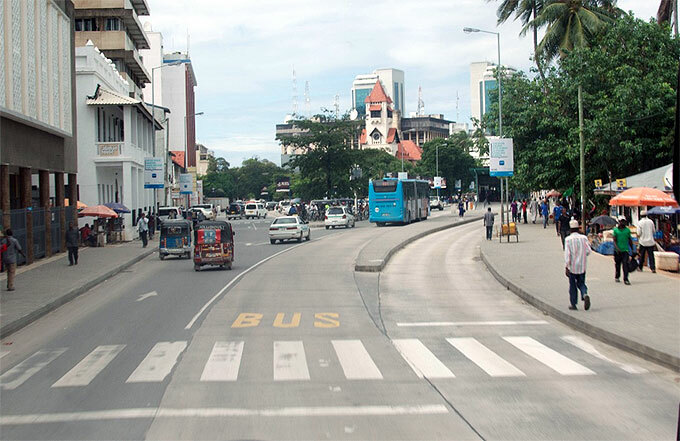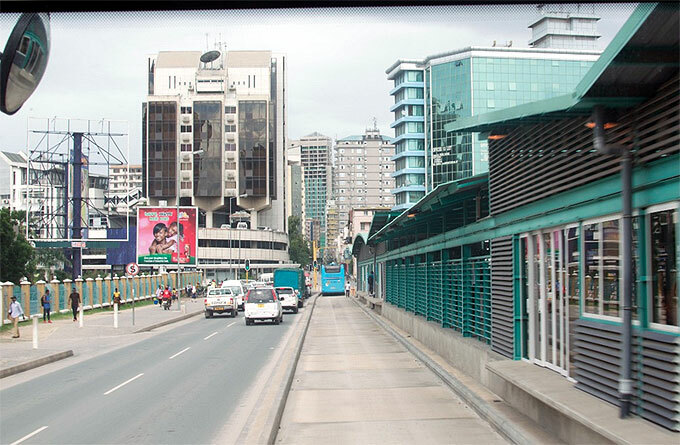Traffic jam eats up sh2.8 trillion every year
Uganda's traffic congestion is more than that irritating jam.
INFRASTRUCTURE | ROADS
After 30 minutes in a maddening traffic jam at the Spear Motors junction, agitated drivers from Ntinda seeking to join the main Jinja road honked their car horns in an attempt to alert the traffic Police about their plight. The police officers ignored them and only allowing them to join about five minutes later.
Another family that resides in residing in Kira says they take three hours to reach office in the morning and three more to reach home in the evening. That is how the traffic congestion in Kampala has grown.
But the traffic congestion is more than that irritating jam. A world Bank study says those traffic jams are costing Uganda over US$800m (over sh2.8trillion) in lost Gross Domestic Product (GDP).
What would the sh2.8trillion do? For clarity, it is equivalent to the combined budgets for the ministries of Health at sh1.2 trillion, Agriculture at sh863b and ICT at sh300b, plus a well-equipped secondary school from senior one to senior six, complete with laboratories at sh600m, and probably a primary school at sh400m. Alternatively one could construct 4660 well equipped secondary schools.
This is the loss that many Ugandans do not quantify as they sit in the traffic jams. True, part of the problem is the improper and inconsiderate use of the road by some drivers, but the biggest problem is the increasing urbanisation and the equally increasing number of cars in the city without matching expansion of the roads or proper planning for them.
As of 2014, Uganda's vehicle population was put at over 500,000 and that the country was adding on 10,000 more cars to the lot yearly. A big number of these are commuter taxis. Cars and station wagons increased from 11,000 in 2002 to over 27,000 in 2009, and motorcycles are increasing almost tenfold from 11,000 to over 100,000.
The report pointed out that the serious traffic congestions are resulting in prolonged travel times, high vehicle operation costs and environmental degradation. They also result in high costs of doing business and are a disincentive to investors. The congestion, it pointed out, was reducing travel periods to snail paces of about 15 km or less per hour.
As a result, the reliability of public transport is very low. As earlier stated, the traffic jams point to problems caused by the increasing urbanisation which is not matched by the planning.

Cheap rapid urban transportation is being implemented in neighbouring Tanzania
The Executive Director of Kampala Capital City Authority (KCCA) Jennifer Musisi told an African regional meeting on Urbanisation and creating resilient cities in Dar-es-Salaam two weeks ago, that the flocking of people to the city is such that whole populations illegally occupy pieces of land over night or over weekends when the city officials are not on duty and it becomes hard to evict them.
"Homes grow over night, over weekends, whole new communities. This outstretches our resources, so we are chasing a target that is moving and the Authority cannot plan as fast as that kind of population growth," Musisi said.
She complained that attempts at planning and effectively dealing with the situation are frustrated by political interference, though she did not elaborate.
According to the Uganda Bureau of Statistics (UBOS), as of 2014, the day time population of Kampala City exceeds 2.5million and at night, it is around 1.5 million people.
In its 2014 report on world urbanisation trends, the UN pointed out that the urbanisation rate of 5.43% indicates that Uganda is moving towards a market economy. This means that the economic decisions and the pricing of goods and services would be guided solely by the aggregate interactions of the individual citizens and business with little government intervention or central planning.
But one of the biggest challenges remains the lagging transport infrastructure to allow the proper spatial growth of the urban areas especially Kampala and the efficiency of its economy.
To begin with there is no provision for rapid transportation to allow easy uninterrupted movement from one place to another. People must be bogged down in commuter taxis and private vehicles which are all competing for space on the narrow roads. A big majority of the people also move on foot, which can only achieve so much.
One journalist, Joachim, summarises his frustration with the transportation system thus: I stopped driving. I cannot sit in the vehicle for two hours as if I am a driver. I am a journalist not a driver ...."
Paul, an economist, says he decided to be leaving home in the wee hours of the morning to try and beat the jam and also leaves office much earlier before the jams become bad. "I am paid sh100,000 per hour. So for every minute I spend in the traffic, sh1,500 is lost.

The rapid bus transportation in Dar- es-Salaam is non-disruptive and eases congestion
A better affordable urban transportation system would improve connectivity and movement of people including the poor and products to markets. This would stimulate jobs which would improve the lot of the poor and ensure inclusive growth.
The argument about cost may not stand because cheap rapid urban transportation is being implemented in neighbouring Tanzania. The rapid bus transportation in Dar- es-Salaam operates on a public private partnership and does not disrupt the existing transportation systems but eases congestion. The private players who operate this other transportation are the same ones in the rapid bus system.
The government lays the infrastructure while the private players (those already in the transportation business were asked to form a company to participate) provided the business. The ticketing is done by a different company and a microfinance bank handles the finances. Each of these have clear cut out roles, and they all meet at the end of the period to divide their dividends and pay off the loans involved.
Tanzania's rapid bus project which has been in operation for a year, and is to be expanded to the rest of the city, has greatly helped commuters including the urban poor.
An attempt at the rapid bus service in Uganda was first made in 2007 when Pioneer Easy Bus was introduced and given a three year pilot contract.
However, this collapsed when Pioneer fought with the City Authorities each accusing the other of breaching the agreement. The City Authorities accused pioneer of not paying the agreed dues and Pioneer accused the City authorities of failing to provide bus lanes for it to operate.
To date, the neither the bus lanes nor the law to govern the system is in place.